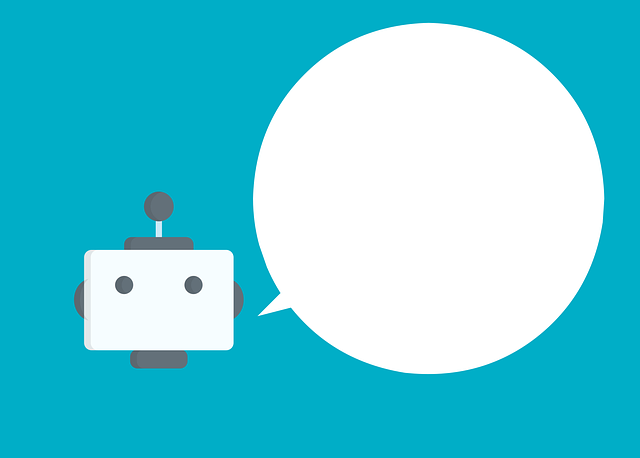Chatbot automation for campaigns revolutionizes business operations in ecommerce by integrating AI to handle tasks like product recommendations and order processing. This optimization improves efficiency, enhances customer satisfaction, and increases campaign ROI through personalized messaging strategies. By leveraging advanced natural language processing, brands can guide users through AI-driven funnels, offering tailored product recommendations and solutions. Continuous data collection and analysis provide insights to refine marketing strategies. Measuring ROI with analytics tools ensures accurate evaluation of chatbot implementations, maximizing campaign ROI and driving sales. To implement successfully, define goals, choose the right tool, design conversation flows, integrate seamlessly, test thoroughly, and optimize based on performance and user feedback.
In today’s digital landscape, enhancing campaign ROI is paramount. Discover how chatbot automation systems are revolutionizing marketing strategies. This comprehensive guide explores the power of chatbot automation for campaigns, offering insights into boosting engagement and optimizing returns. Learn effective strategies to measure and enhance your ROI, along with a step-by-step integration process. By understanding these principles, businesses can harness the potential of chatbots to drive meaningful results and stay ahead in the market.
- Understanding Chatbot Automation for Campaigns
- Strategies to Enhance Campaign Engagement
- Measuring and Optimizing ROI Effectively
- Integrating Chatbots: A Step-by-Step Guide
Understanding Chatbot Automation for Campaigns

Chatbot automation for campaigns has emerged as a powerful tool for businesses, especially in the dynamic world of ecommerce. By integrating artificial intelligence (AI) into chatbots, companies can create intelligent and interactive customer experiences that go beyond simple text-based conversations. These AI-driven chatbots are designed to understand user queries, provide relevant responses, and even anticipate needs, thereby enhancing engagement and driving conversions.
In the context of ecommerce automation, chatbots can handle a variety of tasks, from providing product recommendations to processing orders, freeing up human agents to focus on more complex issues. This not only improves operational efficiency but also ensures that customers receive quick and personalized assistance, leading to increased customer satisfaction and, ultimately, higher campaign return on investment (ROI).
Strategies to Enhance Campaign Engagement

To enhance campaign engagement using chatbot automation for campaigns, brands can implement dynamic and personalized messaging strategies. AI agents, powered by sophisticated natural language processing, can adapt conversations based on user behavior, preferences, and even sentiment. By leveraging this technology, chatbots can create an interactive and immersive experience that fosters deeper connections with customers. For instance, a well-designed chatbot can guide users through an AI funnel, offering tailored product recommendations or solutions to their queries in real time.
Additionally, integrating chatbots into marketing campaigns allows for seamless data collection and analysis. Every interaction provides valuable insights into customer preferences, pain points, and buying behaviors, enabling businesses to refine their strategies accordingly. This level of personalization not only boosts engagement but also significantly improves campaign ROI by ensuring that every customer receives relevant and timely interactions, ultimately driving conversions.
Measuring and Optimizing ROI Effectively

Measuring and optimizing ROI is a critical aspect of any marketing campaign, especially when integrating chatbot automation for campaigns. By utilizing AI chatbots, businesses can gain valuable insights into customer interactions and behavior, allowing for data-driven decisions. Ecommerce AI offers robust analytics tools that track key performance indicators (KPIs) such as response rates, conversion rates, and average order value, enabling marketers to evaluate the success of their chatbot implementations accurately.
The power of chatbot automation lies in its ability to continuously learn and adapt. Marketers can leverage these insights to refine their strategies, personalize customer journeys, and ultimately improve overall campaign ROI. AI chatbots can identify patterns in customer queries, optimize response times, and provide tailored recommendations, enhancing the shopping experience and driving sales. This iterative process ensures that campaigns remain relevant and effective, maximizing returns on investment in chatbot automation.
Integrating Chatbots: A Step-by-Step Guide

Integrating chatbot automation into your campaign strategy is a powerful way to enhance customer engagement and boost ROI. Here’s a simple step-by-step guide for successful implementation:
1. Define Your Campaign Goals: Begin by identifying specific objectives for your chatbot. Whether it’s providing 24/7 customer support, qualifying leads, or offering product recommendations, a clear goal will guide the development process. For instance, if you’re focusing on lead generation, your chatbot can qualify prospects and direct them to the appropriate sales funnel.
2. Choose Your Chatbot Platform: Select an AI automation tool that aligns with your business needs. There are various options available, from basic rule-based chatbots to advanced AI funnels that utilize natural language processing (NLP). These platforms offer customizable features, allowing you to design conversations and integrate them into your website or messaging apps seamlessly. Ensure the platform can handle your expected volume of interactions and provides analytics for performance tracking.
3. Design Conversation Flows: Create a user journey map outlining potential conversation paths. Define how the chatbot will respond to various user inputs, including greetings, questions, and requests. Consider using branching logic to direct users to specific sales or support channels based on their needs. For example, a customer seeking technical support can be directed to an AI-driven troubleshooting guide while others might be offered a quick chat with a human agent.
4. Integrate into Existing Systems: Seamlessly connect your chatbot to your CRM, e-commerce platform, or other relevant software to access necessary data. This enables the chatbot to provide personalized interactions and real-time updates. For instance, it can pull customer information from the CRM to address them by name and offer tailored product suggestions based on their purchase history.
5. Test and Optimize: Before launching, thoroughly test your chatbot’s functionality and conversational flows. Use a mix of common user queries and edge cases to ensure accurate responses. Regularly monitor post-launch performance using provided analytics tools and gather user feedback. Continuously refine conversation scripts and improve the AI funnel based on insights gained from user interactions.
Chatbot automation systems have proven to be powerful tools for enhancing campaign engagement and maximizing return on investment (ROI). By understanding the fundamentals of chatbot integration, implementing strategic engagement tactics, and effectively measuring results, businesses can harness the full potential of chatbot automation for campaigns. Following a step-by-step guide for seamless integration ensures a smooth process that can revolutionize customer interactions and drive significant ROI improvements.
